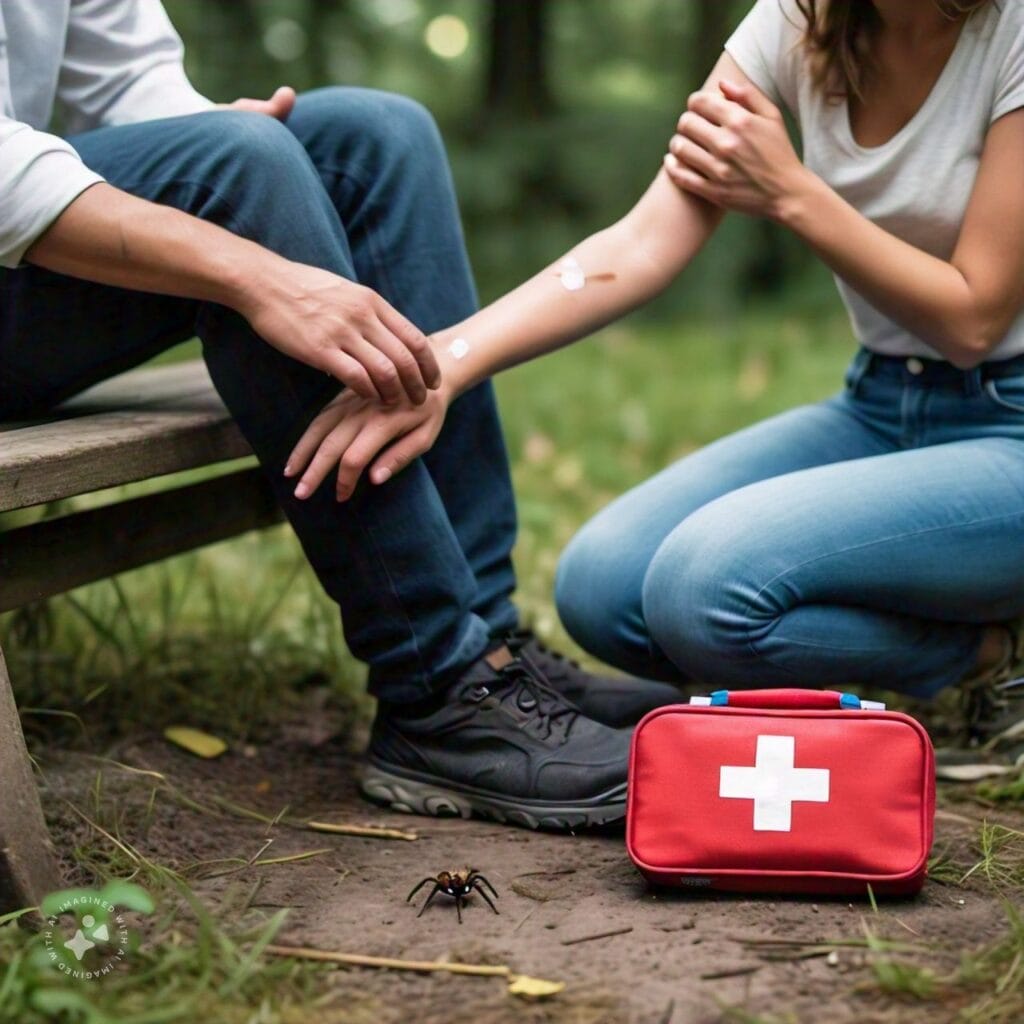The Creepy Crawlies: poisonous spiders in California

The Creepy Crawlies: poisonous spiders in California
From the majestic beaches to the sprawling redwood forests, California boasts a diverse landscape that beckons outdoor enthusiasts. However, hidden amongst this natural beauty lurk some not-so-welcoming residents – poisonous spiders. While these eight-legged arachnids are fascinating creatures in their own right, it’s to be informed about the potentially harmful species that inhabit the Golden State. In this ultimate guide, we’ll delve into the world of poisonous spiders in California, from identification to prevention, empowering you to stay safe and spider-free during your adventures.

Identifying Poisonous Spiders: Know Your Foes
Black Widow Spider (Latrodectus mactans)

- The black widow spider is arguably the most notorious venomous spider in California.
- Easily recognized by its shiny black body and distinctive red hourglass marking on the abdomen.
- Found in dark, sheltered areas such as woodpiles, garages, and outdoor sheds.
- The female black widow is the one to watch out for, as she is known for her potent neurotoxic venom.
Brown Widow Spider (Latrodectus geometricus)

- Often mistaken for the black widow due to its similar appearance, the brown widow has lighter brown coloring and an orange hourglass mark on its underside.
- Prefers to make its home in outdoor structures like patios, eaves, and garden sheds.
- While its venom is less potent than that of the black widow, a brown widow bite can still cause painful symptoms.
Western Black Widow Spider (Latrodectus hesperus)

- Another close relative of the black widow, the Western black widow can be found in various habitats, from deserts to coastal areas.
- Distinguished by its black body with red markings on the abdomen, which can vary in shape and size.
- Like the black widow, the female Western black widow poses the most danger to humans with her potent venom.
Desert Recluse Spider (Loxosceles deserta)

- Though not as well-known as their more famous relatives, desert recluse spiders can be found in arid regions of California.
- Recognizable by their tan to light brown color and distinct violin-shaped marking on the cephalothorax.
- Desert recluse spider bites can lead to necrotic wounds, making them a species to avoid.
Preventing Spider Encounters: Spider-Proof Your Space
- Keep outdoor areas clutter-free. Remove piles of wood, rocks, and debris that can serve as hiding spots for spiders.
- Seal cracks and crevices in your home’s foundation and walls to prevent spiders from entering.
- Use yellow or sodium vapor light bulbs outdoors, as these are less attractive to insects that spiders prey on.
- Shake out clothing and shoes before putting them on, especially if they’ve been stored for a while.
- Implement regular pest control measures to keep spider populations in check.
First Aid for Spider Bites: Responding to a Spider Encounter

Quick Tip: If you suspect that you’ve been bitten by a poisonous spider, seek medical attention immediately.
Black Widow Spider Bite
- Symptoms of a black widow spider bite include severe pain, muscle cramps, nausea, and sweating.
- Apply an ice pack to the bite area to help alleviate pain and reduce swelling.
- Take over-the-counter pain medication such as ibuprofen or acetaminophen to manage discomfort.
- Keep the affected limb elevated to reduce blood flow to the bite site.
Brown Widow Spider Bite
- A brown widow spider bite can cause localized pain, redness, and swelling at the site of the bite.
- Wash the bite area with soap and water to prevent infection.
- Use a cold compress or ice pack to reduce pain and inflammation.
- Monitor the bite for any signs of infection, such as increasing redness or drainage.
Western Black Widow Spider Bite
- Similar to the black widow, a Western black widow spider bite can result in severe pain and muscle cramps.
- Seek immediate medical attention if you suspect you’ve been bitten by a Western black widow.
- Apply a clean bandage to the bite site to prevent further contamination.
- Do not attempt to capture the spider for identification, as it may lead to further bites.
Desert Recluse Spider Bite
- If bitten by a desert recluse spider, symptoms may include pain, redness, and blistering at the bite site.
- Clean the wound with antiseptic to prevent infection.
- Apply a cold compress to reduce pain and swelling.
- Keep the affected limb elevated to minimize swelling and promote healing.
Read more: The Salt Solution: Why Killing Rats with Salt is Gaining Popularity in Pest Control
Conclusion: Stay Informed, Stay Safe
Navigating the wilderness of California’s flora and fauna can be a thrilling experience, but it’s essential to arm yourself with knowledge to stay safe from potential dangers like poisonous spiders. By familiarizing yourself with the identifying features of these spiders, implementing preventive measures in your home and outdoor spaces, and knowing how to respond in the event of a spider bite, you can enjoy the great outdoors with peace of mind. Remember, a little caution goes a long way in ensuring a spider-free adventure in the Golden State.
So, the next time you embark on a hiking trip or set up camp under the starry California sky, remember the tips and insights shared in this guide to keep those eight-legged critters at bay. Happy trails and spider-free adventures await!




